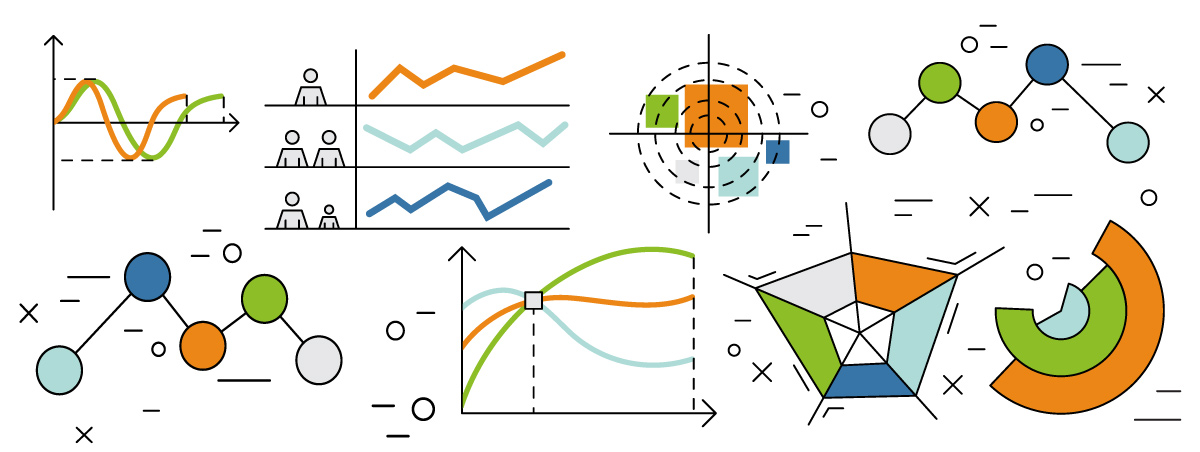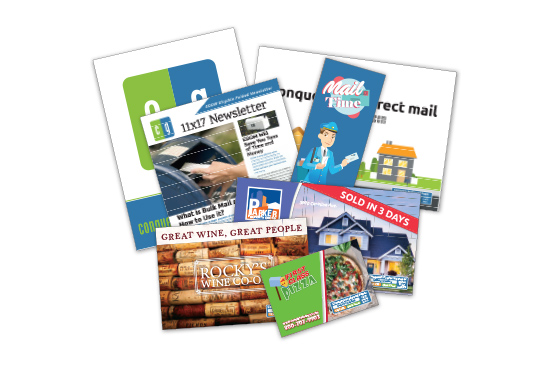Catalog instant quoting
Get a quote on your next catalog order in seconds.

When it comes to producing a catalog that actually has an impact on your bottom line, there are a number of things that must be considered. While the design and appearance of your catalog does have a significant impact on how many people read your catalog and make purchases from it, these things are somewhat subjective and aren’t easily attributed to individual changes or visual elements of your catalog’s design.
This means that changing your catalog’s design can have a big impact on how well it performs, but only to a certain extent since so much of a catalog’s success depends on who its being sent to. If you want more tips on how to improve the success of your catalog through changes to design and overall marketing strategy, check out our recent blog on 7 Steps to a Successful Catalog Marketing Strategy.
Assuming you take the necessary steps to make your catalog as visually appealing and strategically effective as possible, you need only follow a few of the tips in this blog to get a better idea of how to track the success of your catalogs and improve their success rates by being a little more conscientious of who you’re sending them to.
If you’ve ever attended a marketing seminar or conference, you’ve probably heard the phrase “80% of your business comes from 20% of your customers.” This idea is based on the principle that most of your customers aren’t the kinds of “high value” customers that keep your business afloat.
Rather, this principle asserts a truth about customer bases that many years of marketing data analysis and research have been shown to support. The method by which a business calculates the lifetime value of an individual customer or customer group varies from business to business, but there is one analysis tool that remains consistently effective and accurate across all industries.
Perform an RFM analysis of your customers
 The RFM analysis is a marketing technique that considers the following details about each of your customers and/or customer groups:
The RFM analysis is a marketing technique that considers the following details about each of your customers and/or customer groups:
- Recency – how recently has the customer made a purchase? “Higher value” customers will typically be recent purchasers.
- Frequency – how often does the customer purchase from you? Distinct from recency, frequency measures how often the individual customer or customer group makes a purchase from you.
- Monetary Value – how much does the customer typically spend on their purchases from you?
These three things can be measured and ranked into numerical categories which can then be totaled to serve as an indicator of a customer’s overall RFM value to your business.
For example, for each of the RFM parameters, you could say 1 is the lowest and 5 is the highest. Using this scale, your most valuable customers would be “555” customers and “111” would be your least. Rather than totaling these numbers to say your top customers are 15s and your least valuable are 3s, it’s important to keep these three numbers separate so you can easily break them apart to determine how an individual customer performs in each category. For example, knowing a customer is a 9 doesn’t tell you much about what kind of customer they are. Knowing they’re a “522” does, since this indicates they purchased recently, but aren’t the most frequent or valuable purchasers.
Using RFM values, you can segment your customers into groups that receive slightly different, tailored marketing messages that either seek to keep them as a “555” customer or cultivate them until they are.
This technique doesn’t mean you should neglect your customers with a lower score. Just because someone has a “111” today doesn’t mean they aren’t capable of becoming a “555” in a few months. It only takes a few simple purchases to turn an underperforming customer into an excellent one.
If your business uses a CRM to keep track of such scores, you can incorporate other variables such as transaction-channel preference, preferred products or categories of products, customer persona or type, and marketing email opt-in status. This allows you to automate your marketing so each customer receives a slightly more applicable marketing message, all with the goal of bringing them closer to becoming a “555” customer.
How does an RFM analysis improve the efficacy of my catalogs?
Just as you can use RFM scores in your CRM to determine whether a customer receives a certain type of marketing message, you can also use that same score to determine who receives catalogs or other mailers. The ideal recipients for your catalogs will therefore be customers with high recency and frequency scores.
A customer’s monetary value isn’t necessarily an indicator that someone is a better recipient for a catalog or any other format of media for that matter, but there are other factors you could monitor alongside RFM values to more effectively target catalogs so you don’t end up wasting copies on customers that aren’t likely to make purchases.
For example, you could include fields in your CRM to indicate whether a customer has previously made a purchase from a catalog you mailed out, and you could even indicate the value of their catalog purchases if you wanted more precise details available.
To get these kinds of details, you must first establish a method of tracking your printed and mailed marketing materials so you can get a rough idea of how many of the copies you sent out resulted in a customer “conversion.” A conversion could be an online purchase, a visit to your website, a mailed-in order form or a phone call. To make sure you capture as many of these purchases, website visits, or phone calls as possible, you need to create a trigger that is set off inconspicuously when a customer decides to take one of your calls to action mentioned in or on the catalog.
For example, if you ask a customer to call your business, you could use a special number or a direct line within your business that will allow their purchase to be linked to a particular edition of your catalog.
If your call to action is to bring a customer to your website, you could use a personalized URL (PURL) for each individual printed piece using variable data printing that will allow that website visit to be linked to the specific mailed catalog.
Looking for some pre-made templates to help you get kick-started on your next catalog's design? We've got you covered.
Another option would be to do a general URL for an entire set of mailed catalogs that allow you to track the customers who made a purchase using that specific catalog. You could also run a catalog-specific promotion that uses a coupon or promo code that the user has to give a salesperson or enter in their shopping cart to receive a discount that can also be used to see how many people saw the catalog and made a purchase as a result.
No matter what, the trigger would ideally be something that the customer doesn’t notice, but if you absolutely have to, it can also never hurt to have your salesperson ask the question as the customer is making the purchase so it can be manually recorded, as well.
Stop spending money to lose customers
If you’re sending monthly catalogs to customers who’d prefer to only receive marketing messaging from you on an annual basis, you could actually deter them from purchasing from you again. Because of this, you could be wasting money to send catalogs to customers who will subsequently not spend any of theirs on your products or services as a result.
 While this possibility seems nightmarish to any optimistic marketers out there, it’s not all that uncommon. It’s because of scenarios like these that it’s important to keep track of your catalog sales attribution rates in addition to tracking the results of each of your catalog mailings.
While this possibility seems nightmarish to any optimistic marketers out there, it’s not all that uncommon. It’s because of scenarios like these that it’s important to keep track of your catalog sales attribution rates in addition to tracking the results of each of your catalog mailings.
Using some of the methods we outlined above for tracking sales attributed to catalog mailings, you can figure out your catalog sales attribution rates. This number answers a fairly simple question: what percentage of my overall sales can be attributed to one of my catalog mailings?
Once you have a list of customers who made a purchase after reading your catalog, you have a set of data that you can analyze to determine which segments of your customer base respond best to catalog marketing. If there are segments that you notice haven’t responded at all to catalog marketing, you should stop sending catalogs to them as frequently. Maybe they’d respond better to catalogs sent quarterly or yearly, rather than monthly.
By keeping track of this data in a consistent manner, catalog mailing to catalog mailing, you can refine your future catalog circulation plans and simultaneously develop a sales forecast for catalog orders. This data can also be used to figure out the historic and forecasted revenue expected from each catalog mailing.
A truly optimized catalog campaign will be one that’s targeted intelligently, using data from previous catalog mailings to determine which of your RFM segments should receive what catalogs.
This will prevent you from wasting catalogs on segments that realistically weren’t responding well to your catalog mailings. This could ultimately save you a lot of money; money that you can then allocate to acquisition to keep your customer base growing in the right direction.
What metrics to keep an eye on for each mailing
For all your future mailings, it’s important to keep your metrics and data collected consistent so you can accurately compare numbers over a larger period of time without having to worry about estimating or converting any old metrics you collected to be compatible with your new data.
For each of your catalogs you publish, it’s important to know the following:
- The response rates (or conversion rates)
- Average customer order size
- Dollars of revenue made per catalog (or how much you lost per catalog if you’re working with a fledgling campaign or one that’s simply not working)
- Seasonal influences; for example, if it’s the holiday season, you may experience a sharp spike in catalog response/conversion rates
- Customer acquisition cost (if you’re prospecting)
- Signs of any list fatigue (if any of your marketing segments are beginning to shrink or shift downward as a result of any changes to your catalog marketing frequency or some other catalog campaign detail)

Making data-informed alterations to your catalog marketing
As a result of the statistics you’ve collected, you should be able to constantly improve your catalog campaigns in a way that improves your sales and bottom line. By monitoring the right kinds of data campaign to campaign, you should be able to figure out how many catalogs or postcards you should send each customer segment over the course of a year.
You should also be able to know (with relative precision) the number of sales you made that are attributable to one of your customers reading a catalog.
This data should also help you find out how reliant your newest customers are and you should be able to figure out how to changes in frequency or catalog content affect their segment’s spending habits. It should also be noted that customers should constantly move in and out of various RFM segments due to the fact that recency and frequency are such important variables to this calculation.
For example, a customer that typically didn’t purchase from you but once every year may suddenly have a need for your good or service on a monthly basis. This will result in a lower segment customer suddenly becoming one that is more in the moderate to frequent buyer category. This kind of change should be reflected in your data as it changes, so keeping these numbers up to date for each mailed catalog you’re sending is of utmost importance.
In the example above, the customer’s sudden switch may not necessarily change their marketing preferences, however, so keeping track of which customers prefer what kinds of communication should also be recorded in the customer notes section in your CRM.
You’ll know your strategy is appropriately enhanced when you fully understand the answers to the following questions:
- How many catalogs should you print?
- Who should you mail to?
- How frequently should you mail to them?
- How should you track results so you can reach more of your target customers?
Using these techniques, you should start getting your catalogs into the hands of people who are actually going to buy something from you and stop tossing them into the hands of those who don’t even really want them.
When it comes to saving money on the catalogs you send out, there are plenty of commercial printers out there who are more than happy to help with both your printing and your mailing. Many of those printers will charge you extra fees for mailing, and they’ll often lack the speed and capacity to handle larger orders. If you want to learn more about how much it costs printers to produce catalogs, check out our blog on the topic to learn more.
By printing and mailing with Conquest Graphics, you’ll only have to pay whatever the post office charges you for postage and our relatively low printing prices. In this way, you can save tons of money on your catalog marketing while also simplifying your marketing process by going with a modern, efficient web-to-print printer.
How to Make a Catalog that Gets Results
Not all catalogs are created the same, especially when ordered online. Read this to see how to make a great catalog that truly gets results. Click to learn more.
By Conquest Graphics









